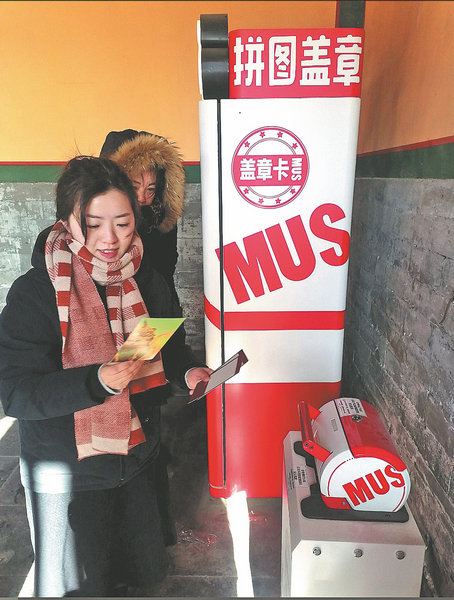

Shi's favorite set comes from the Yonghe Lama Temple in Beijing, consisting of 16 stamps. Collectors need to visit different halls within the temple to obtain the stamps, and each of the designs corresponds to the architecture of the respective halls.
"In the process of searching for these stamps, I toured almost the entire scenic area. I don't usually pay much attention to buildings, but these stamps have made me focus more on their architectural facades," she recalled.
Introducing stamp services has also become a way for many businesses to attract foot traffic. After stamp-collecting enthusiasts learn about these services on online platforms, they visit the stores, generally requiring a minimum purchase before being able to obtain stamps for "free".
Shi said that when strolling in scenic areas, she prioritizes visiting stores where she can collect stamps.
She currently operates a private museum in Kunming. Since last October, she has also introduced stamp-collecting services to encourage more visitors to explore the museum.
Gong Jian, deputy head of the Wuhan Branch of the China Tourism Academy, told China News Service that stamp-collecting activities in various parts of China are flourishing, enhancing the participation and experiential enjoyment of tourists.
In the era of social media, tourists are keen to share their collecting strategies with others through internet platforms, making offline check-ins and online dissemination an effective way of cultural and tourism promotion, Gong said.
He suggested that, in light of this trend, scenic spots should also strengthen the integration of tourism with culture and education in order to enhance the quality of their products.